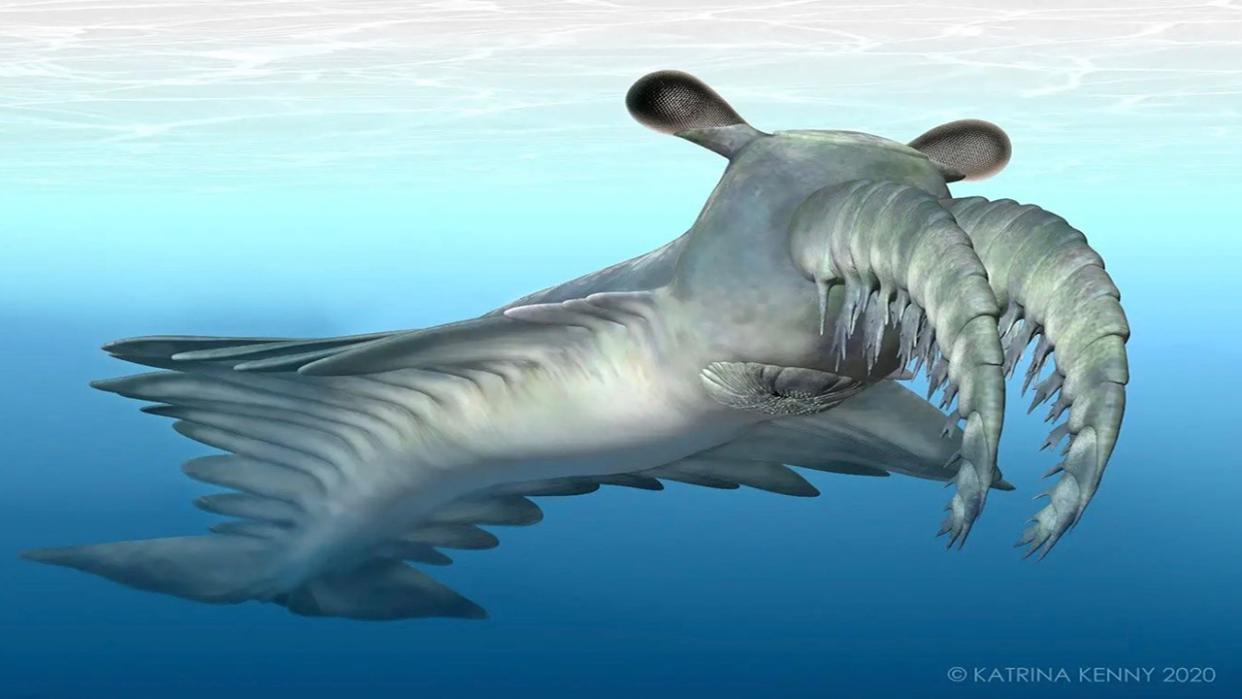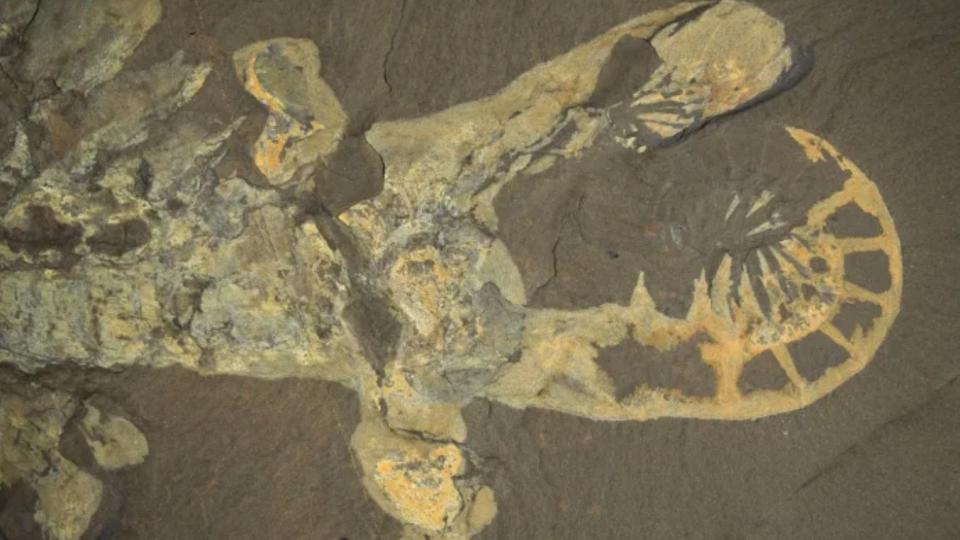500 million-year-old 'abnormal shrimp' used facial spikes to 'pincushion' soft prey


Around 500 million years ago, an apex predator no larger than a house cat terrorized the seas in search of prey to puncture with its spiky facial appendages.
For years, paleontologists thought that the arthropod Anomalocaris canadensis, whose name roughly means "the abnormal shrimp from Canada," used its spears to pierce trilobites and other hard-shelled prey. However, a new study finds that this Cambrian critter likely hunted soft-bodied animals instead, according to a study published July 5 in the journal Proceedings of the Royal Society B.
"There had been a long-standing question about what was causing the injuries we were seeing on Cambrian trilobites [in the fossil record of Canada's well-preserved Burgess Shale]," lead author Russell Bicknell, a postdoctoral researcher at the American Museum of Natural History in New York City, told Live Science. "It had been hypothesized that A. canadensis was possibly one of the animals that was causing the damage by using its spiky appendages to grab and pierce its prey."
Related: Ancient armored 'worm' is the Cambrian ancestor to three major animal groups
The shrimp-like A. canadensis reached lengths of about 3 feet (1 meter), which included its two fearsome facial appendages. Previously, another team of researchers suggested that tough trilobites weren't part of this apex predator's diet, according to bite force models. But the new team took a different approach.
The scientists created 3D computer models of A. canadensis based on existing fossil evidence and also looked at animals that could stand in as modern-day analogues of the Cambrian beast, such as whip spiders (part of the arachnid order Amblypygi) and whip scorpions (Uropygi). They studied how these modern arthropods used their appendages to grab and hold prey.

The team concluded that, while A. canadensis might have been adept at grabbing animals, the animal's two facial appendages would've been too delicate to actually pierce through trilobites' tough exoskeletons, which Bicknell said would have "possibly been made up of a similar chemical composition as the cuticle of a horseshoe crab's exoskeleton."
"We showed that the spikes on the appendages probably would've been damaged if it were to try to deal with harder prey," Bicknell said.
RELATED STORIES
—Likeness of Cambrian critter finally revealed, and it looks like a taco
—Helmet-headed Cambrian sea monster sucked up prey like a Roomba
—Ancient dog-size sea scorpion unearthed in China
Instead, the researchers determined that this ancient hunter targeted soft-bodied animals swimming and floating within the water column.
"This animal probably swam like cuttlefish, with its appendages outstretched in front of it and its flaps undulating to help it accelerate through the water," Bicknell said. "It would then grab its prey and puncture it as if it were a pincushion."

